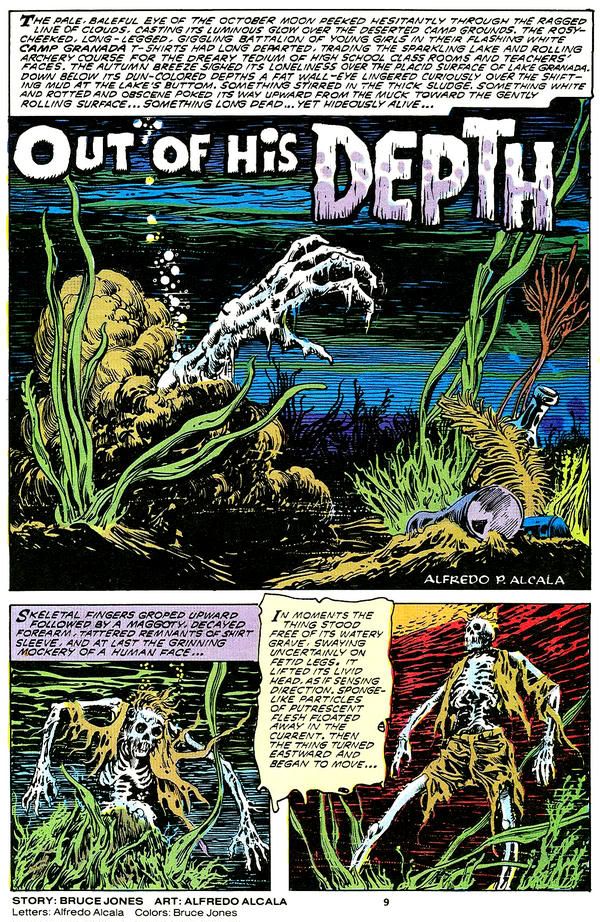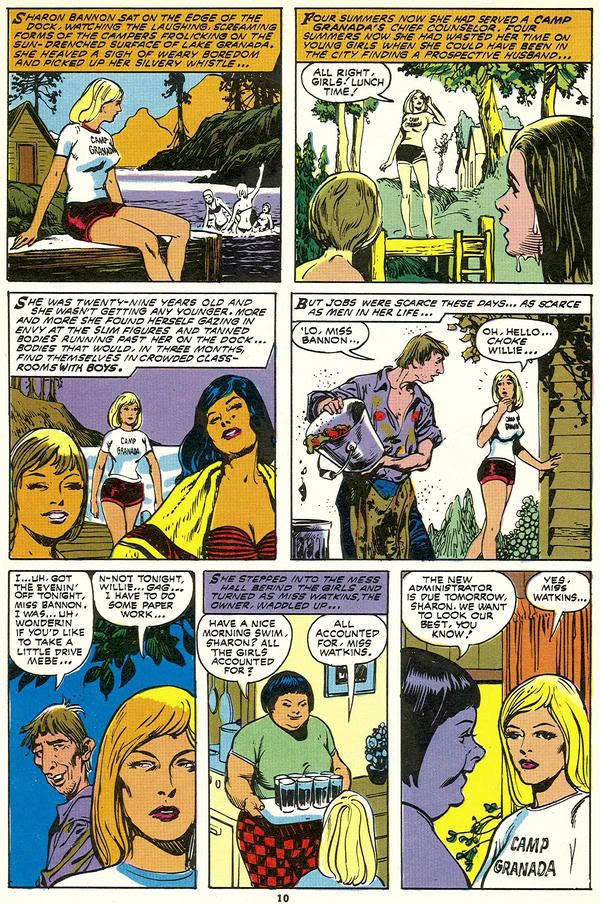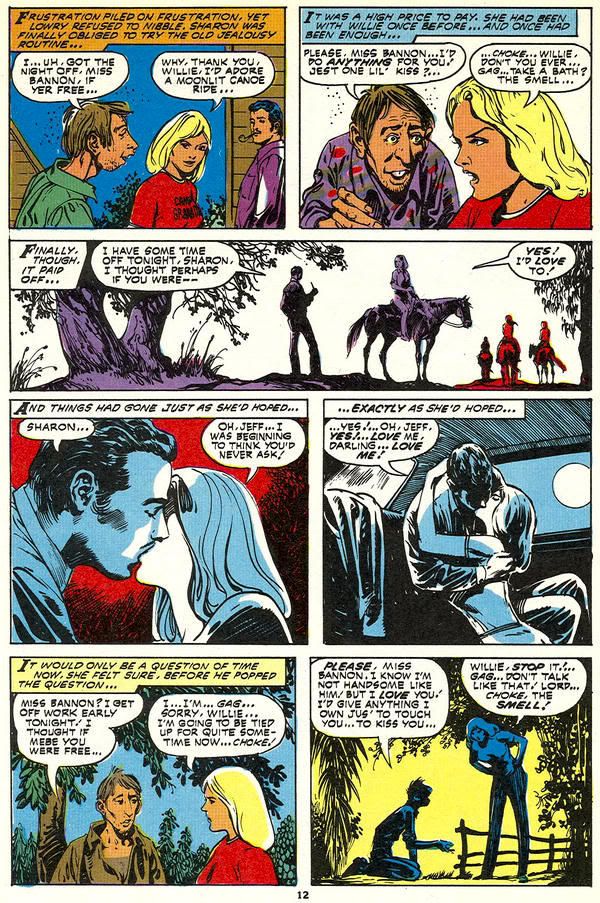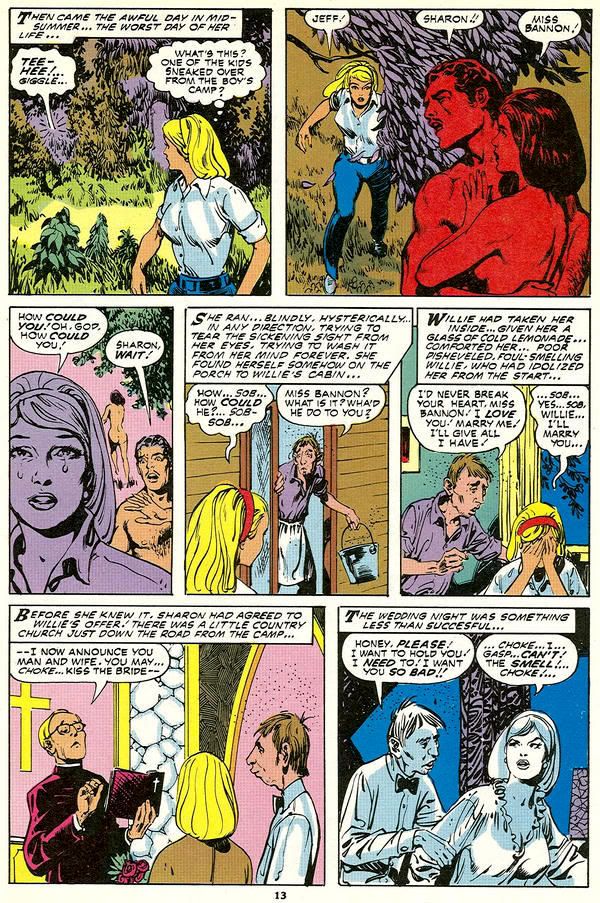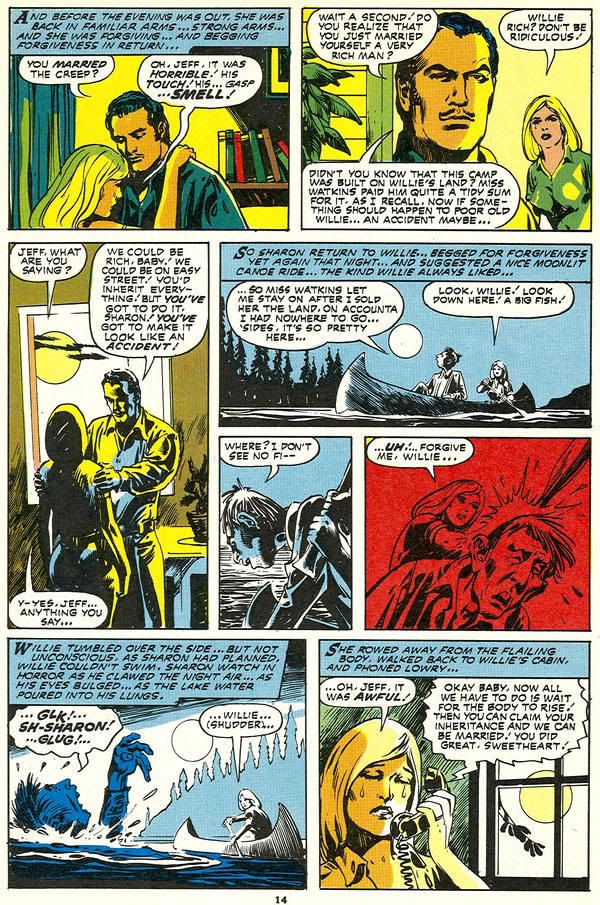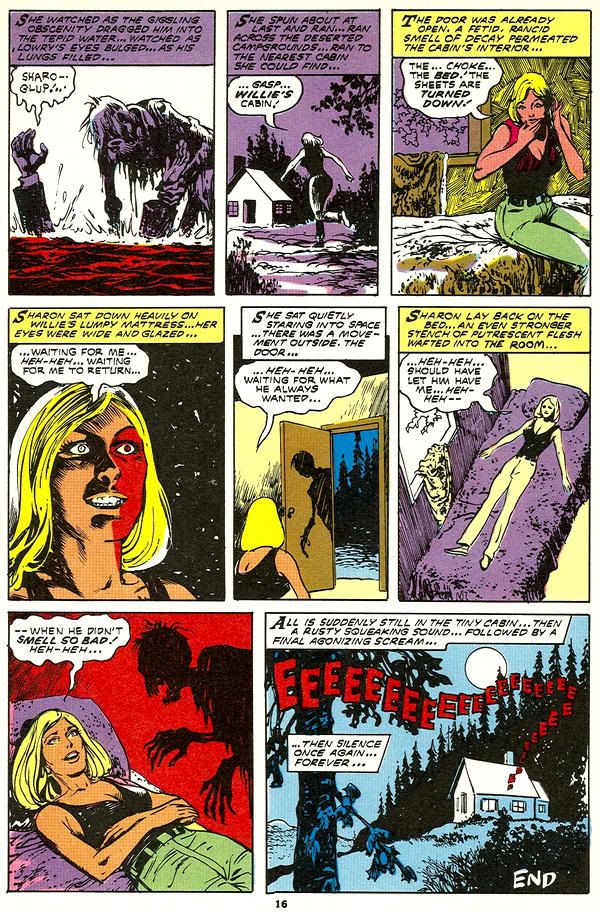 [This review comes from Collected Editions contributor Derek Roper]
[This review comes from Collected Editions contributor Derek Roper]There is this house, see, and it has had its fair share of occupants; a drifter and more recently a group of six mercenaries. But before them, there was a man named Abel and his “imaginary friend” Goldie, they spent many nights alone in this house. Although old and rickety it held many strange tales hidden within its walls. This house--The House of Secrets--is back with its strange and gruesome tales in
Showcase Presents: The House of Secrets Volume 1. Scream!
I have to play realtor for a minute. The house was built by Kentucky Sen. Sandsfield. As the tales goes; he built it by hand. Every inch of the place is made with 100 percent Kentuckian material. He claimed that if the house wasn’t built with pieces of Kentucky, it wasn’t a real Kentucky home. It should be noted that the senator’s wife went mad in the house--yup, mad as a hatter.
After that, the house went through four owners who weren’t pure Kentuckian and so the house set dormant for a little while until a man by the name of Mr. Barkus purchased it and decided to have it hauled away on a trailer. But he too did not last long, as it was told; the house detached itself and knocked Barkus off a cliff where he met a gruesome death. The next owner, Abel, who was a pitiful man, was talked into looking at a house by a creepy realtor who disappeared and filled Abel with the entire house’s tales. Next up was a girl--a drifter--by the name of Rain Harper. She moved in (in the Vertigo series) and found that a closet held the Juris, a group of spirits who judged people whether they liked it or not. Eventually, the house was said to be demolished after the girl left. The last guests to move into the house before the events of
Infinite Crisis were a group of six mercenaries who called themselves the
Secret Six.
Now that you have the history, the collection in question boasts over 500 pages of horror and suspense tales, and collects
The House of Secrets #81-98 and even some stories from its sister book
The House of Mystery.
Each issue has stand-alone stories but also an underlying arc featuring the narrator Abel (think Rod Serling) who gets acclimated with the house. He is very timid at first but after his spooky introduction via the realtor he learns the ropes of the house and becomes just as creepy as the stories that are hidden within the halls. He is frequently visited by his brother Cain who lives across the way at the House of Mystery. The two frequently fight over who has the scarier stories.
Being that this was written in the 1970s, don’t look for modern dialogue; it is very proper and uses slang from that era. It is easy to read but if one has come into comics in the 1980s on, words like “shnook” don’t really pack much of a punch.
For fans of horror literature, most of the surprises in the stories can be seen from a mile away. It is kind of disappointing because they seem like a rehash of stories from the
Twilight Zone and
The Dark Side. Nostalgia is the only thing that can get one through these stories, and they’re in black in white to boot.
The black and white pages are cheaper economically but sometimes detract from the story. In the stories that have a dark setting, the mood doesn’t come across as strong. In the story “The Little Old Winemaker,” the ending effect of the red wine was supposed to resemble blood, but given that it is black it doesn’t do much for the story. Lighting and the creatures in subsequent stories also need color and not just zebra colored pages. I’ve had the honor of seeing the color pages and they have a sort of color to them that is reminiscent of the old
Scooby-Doo cartoons. Plus, art by Alex Toth, Neal Adams, and Jim Aparo deserves to have its artwork in color.
Still, plenty of highlights stand out in this book. “Trick or Treat,” featuring a theif who meets an unfortunate end, is downright scary. An early version of the modern Swamp Thing also appears in issue #92,
with story and art by Len Wein and Bernie Wrighton respectively.
In between the stories are “Able’s Fables,” which are like a spooky version of Tony Millionaire’s
Makkies. They feature eccentric and sometimes downright dangerous situations like a little boy on the other side of a “Peep Show” stand blowing a dart through a straw towards the cornea of a business man wanting a thrill.
The tales from the House are the perfect collection to read to the kiddies or ones suffering from horror nostalgia, but for horror aficionados, this is better left on the shelf.
The next volume,
Showcase Presents: House of Secrets Vol. 2 will feature issues #99-119 and also promises 500 pages of on-the-edge-of-your-seat-tales.
Happy Halloween from Collected Editions!
